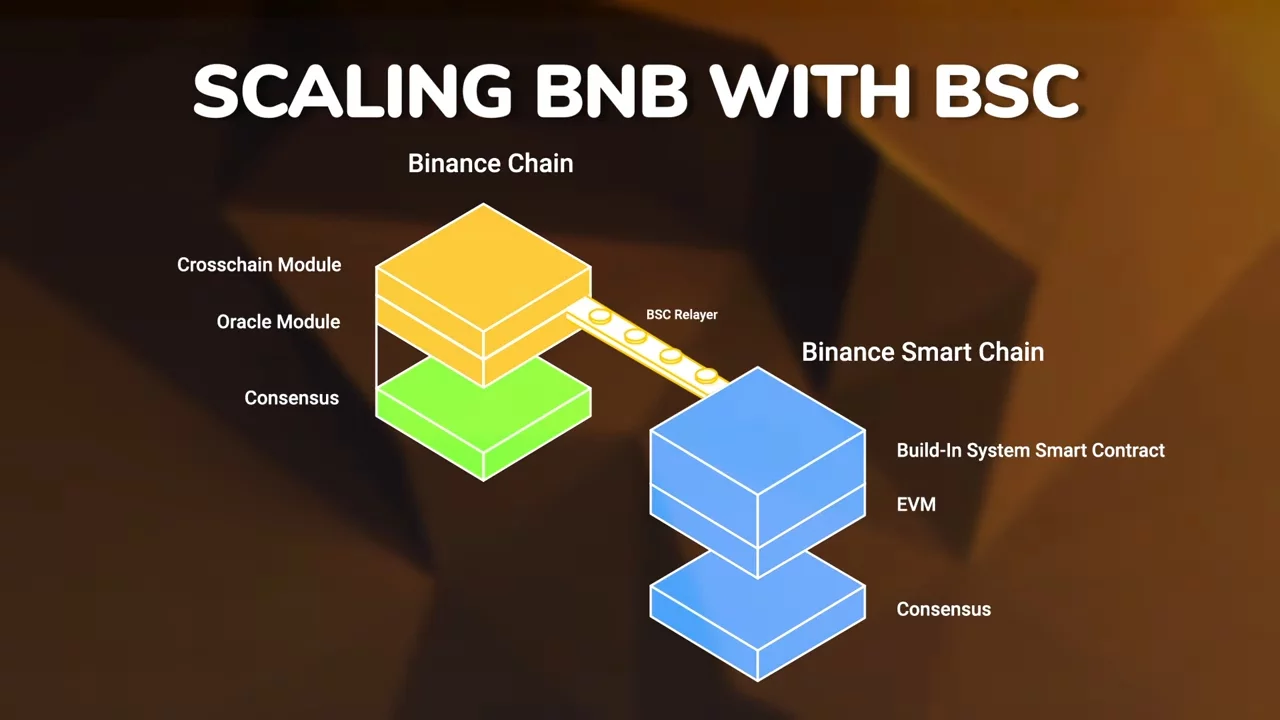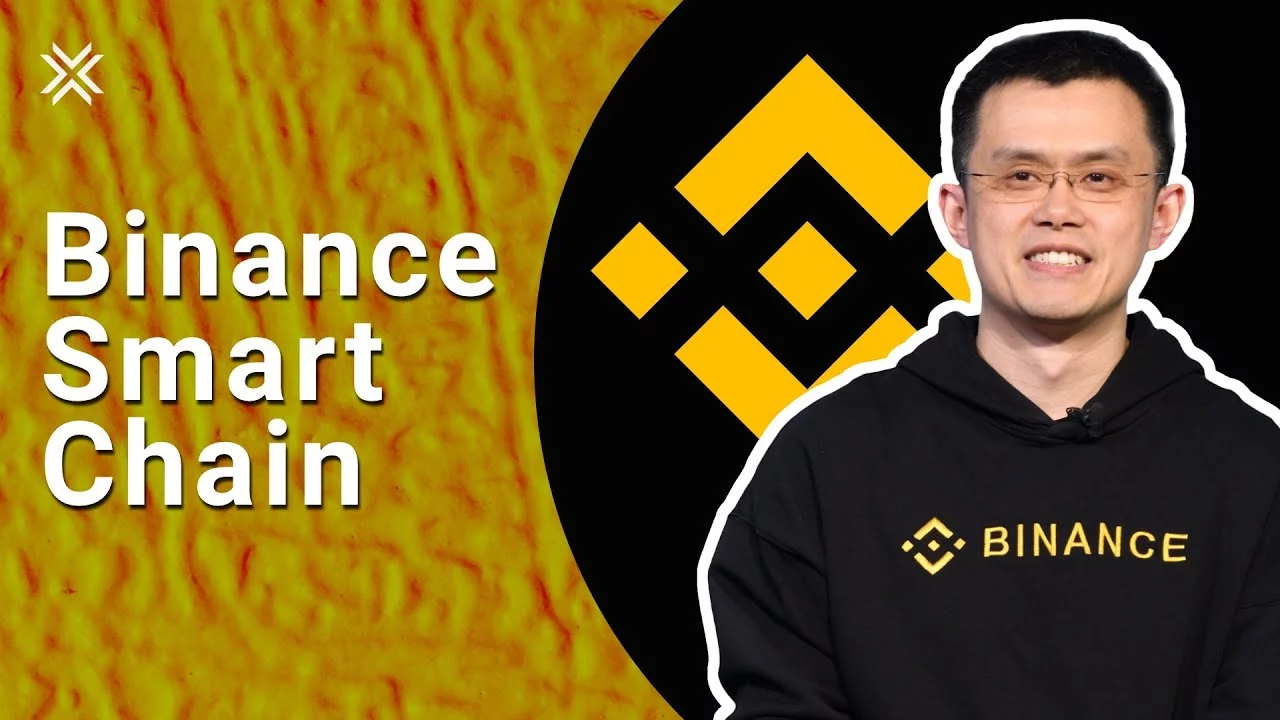Binance started as a popular centralized crypto exchange, which in 2020 saw a record total trading volume of over 3 trillion dollars. Since then, Binance has expanded to become an entire crypto ecosystem. Users now have access to lending products, the BUSD stable coin, a decentralized exchange, and a community launchpool which helps new projects to build on the Binance blockchain.
As of September 2020, the platform began hosting smart contract functionality on the Binance Smart Chain, which runs parallel to the main Binance blockchain. This ensures that the Smart Chain can grow without slowing down the other tools that are built on the ecosystem.  And the BNB development fund is aggressively pursuing this cause! Also, 100 million dollars has been set aside for projects that commit to building on BSC, with individual projects able to claim up to $100,000 if they are successfully chosen by the Binance community.
And the BNB development fund is aggressively pursuing this cause! Also, 100 million dollars has been set aside for projects that commit to building on BSC, with individual projects able to claim up to $100,000 if they are successfully chosen by the Binance community.
BSC developers claim that the blockchain’s Proof of Staked Authority (PoSA) consensus provides the ideal balance between high performance and decentralization, despite the fact that there are only 21 validators compared to Ethereum’s 11,000 nodes.
Binance founder Changpeng Zhao (‘CZ’) has been quite vocal on Twitter about his intention to sort out the high Ethereum gas fees by offering a cheaper and more scalable solution on Binance.
Unlike the Binance blockchain, where many of the projects have been built from the ground up, Binance Smart Chain is being populated mostly by Ethereum-based projects that are bridging between the two blockchains in order to provide relief for the high gas fees. That doesn’t mean that they are completely moving away from Ethereum, just that they have decided to build out, and leverage the benefits of both platforms.
A lot of experienced crypto traders will have heard of IDEX, which is one of the oldest decentralized exchanges in the space. IDEX has traditionally been a place where traders could buy newly-listed Ethereum projects via the metamask wallet, but the popularity of the exchange has been tested in the past year or so, perhaps because of the popularity of Uniswap and liquidity farming.
Now, IDEX is taking the initiative to launch a multi-chain solution, which allows them to onboard new assets and reduce settlement costs for their users. The integration with Binance Smart Chain has been completed, and the initial trades have been finalised with an average transaction fee of 10 cents, compared to $4.50 on Ethereum.
IDEX is also planning to benefit from the future of cross-chain DeFi, by integrating with both Polkadot and Algorand.
Sushiswap is another popular DeFi project that has made the move onto BSC, in order to escape from Ethereum gas fees. They have also built out onto the Fantom blockchain, and this cross-chain expansion arguably leaves them in a stronger position than c, the project that, ironically, Sushiswap copied all of their original code from!
The third Ethereum-based DeFi protocol that has migrated onto BSC is Cream Finance! In a Medium post, the team behind the Cream lending and liquidity farming protocol talked about the advantages of having access to the Binance ecosystem’s 170 fiat gateways and 400,000 user accounts. They see centralized exchanges as having a vital role in the growth of the DeFi space and the accessibility of governance protocols. How better to make your platform democratic than having hundreds and thousands of users who can vote and contribute to the decision-making process?
The DeFi protocols that are firmly based on Binance Smart Chain include Pancake Swap, which is basically a copy of Sushiswap except with the addition of syrup, and Zero Swap, a familiarly-structured lending and borrowing platform that supports both ERC-20 and BEP2 tokens.
Aside from DeFi, another area of the crypto sphere which is growing rapidly are non-fungible tokens, or NFTs. Bounce Finance is a decentralized auction platform that allows users to bid for NFTs (pieces of digital art) using either BNB or ETH for payment.
By going live on both blockchains, the Bounce team were one of the first to take advantage of MetaMask's Binance Smart Chain integration. Yep - by simply adding the Binance Network onto your Metamask in the settings, you can now use the browser extension to interact with Binance Smart Chain apps. Pretty cool!
Considering that the blockchain market size is predicted to grow exponentially over the next years and decades, there is surely enough space for a symbiotic relationship between Binance and Ethereum.
Ethereum’s current scaling issues can be boosted by the capabilities of the more centralized Binance blockchain, and this will allow some of the crypto industry’s most popular DApps to continue to function without the barrier of extremely high fees. Meanwhile, projects built on Binance can effectively improve their level of security and decentralization by also operating on the Ethereum blockchain. And with other interoperable blockchains like Polkadot and Cosmos on the horizon, the future looks to be multi-chain regardless.


No comments yet